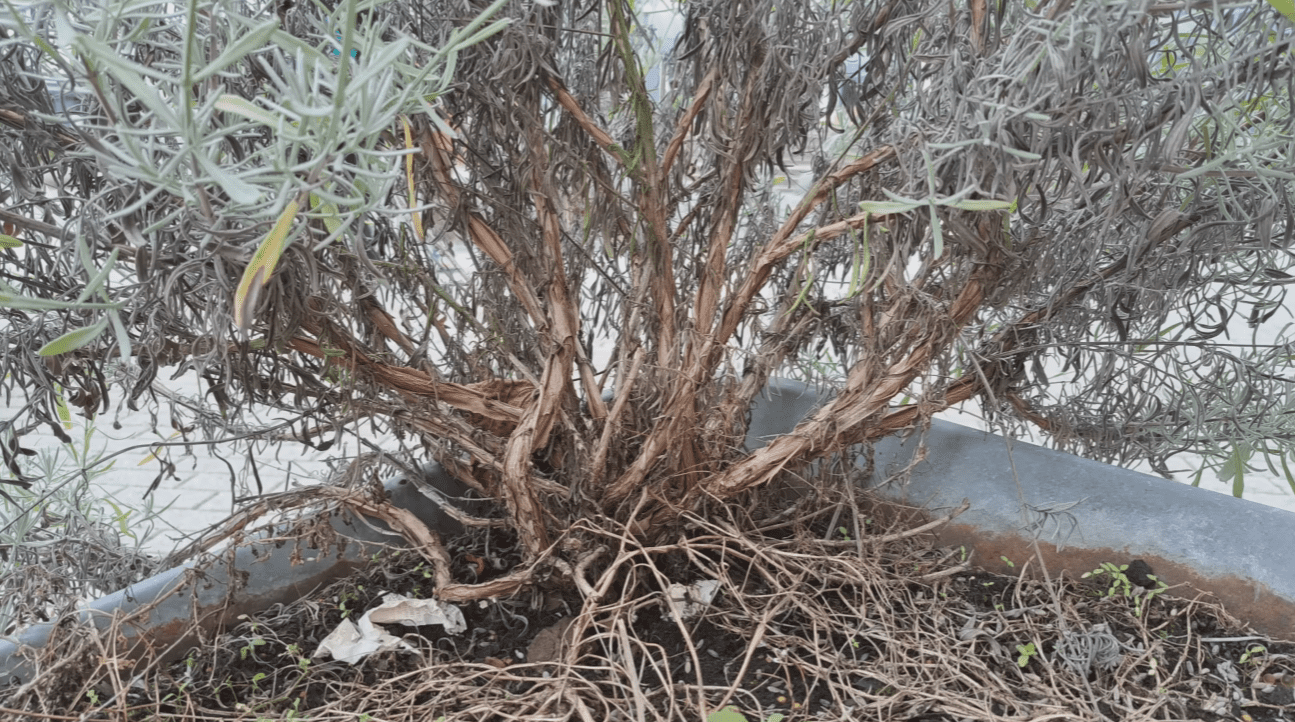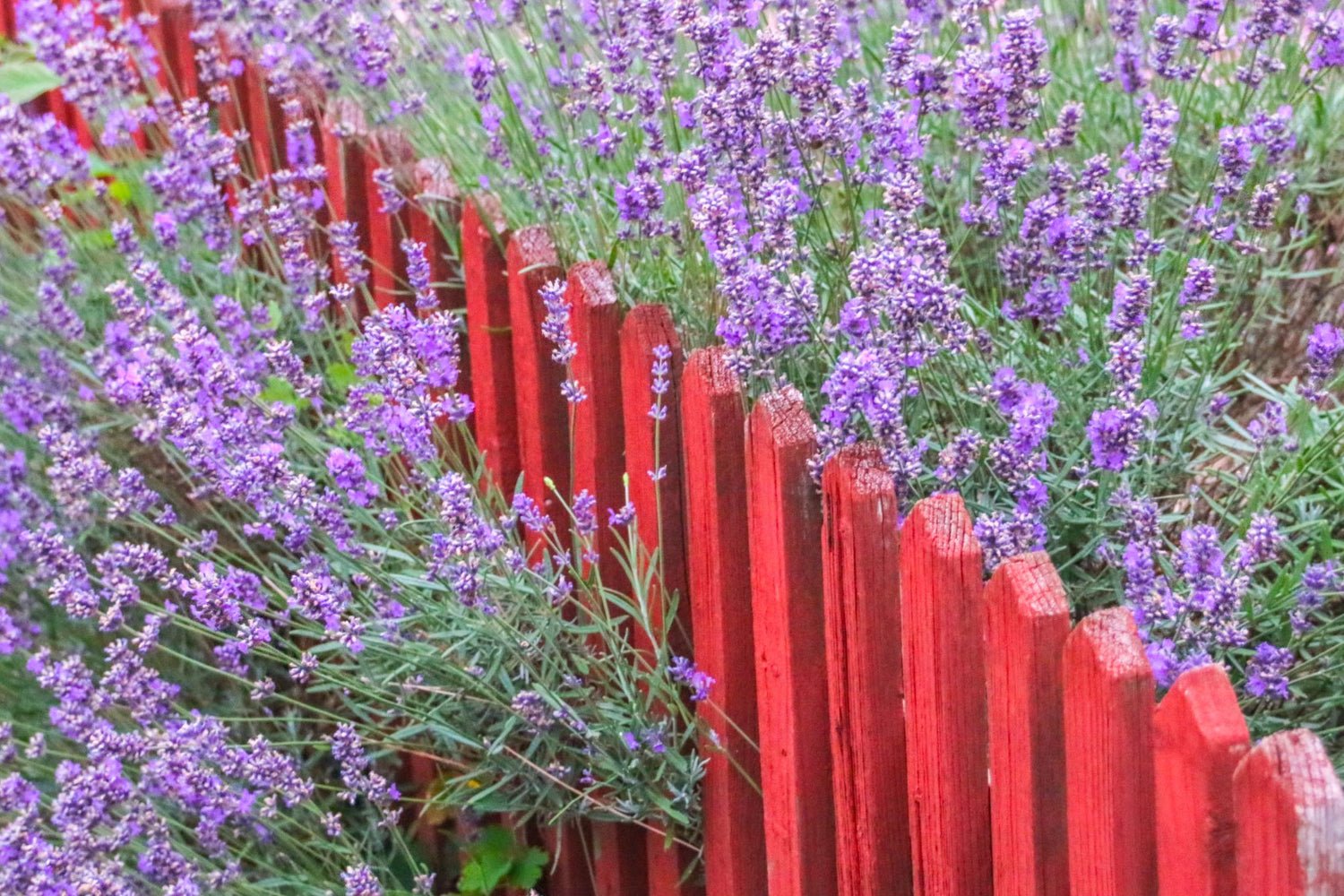
Table of Contents
- Introduction
- Lavender doesn’t like “rich” soil
- How to prepare the soil properly
- Another clever hack: use a pot as a template
- Sun, sun, and more sun
- Small tips, big results
- Lavender’s “Fringe”
- How often to trim
- When to start and how frequently to trim
- Why Regular Trimming Matters
- How to Prune Lavender Properly
Lavender is one of the most beloved ornamental plants for flower beds, balconies, and gardens. It enchants with its fragrance and adds a touch of elegance to any landscape design. Lavender attracts bees, butterflies, and admiring glances from neighbors. But for it to truly flourish, you need to know a few secrets, as shared by gardener Anya Lautenbach.
Lavender doesn’t like “rich” soil

Unlike most plants, lavender doesn’t appreciate rich, moist soil. It originates from the Mediterranean, where it grows among rocks, sand, and sunshine. So, the gardener’s main task is to recreate its natural environment.
How to prepare the soil properly
The gardener shared her simple yet effective recipe for growing lavender:
Base: Peat-free compost (an eco-friendly alternative to peat that better maintains soil structure).
Additional ingredients: Sharp (builder’s) sand and gravel. These should be added to the compost in a ratio of about 2:1:1.

This improves drainage and makes the soil light and breathable — exactly the conditions lavender loves. Its roots can’t tolerate standing water.
Another clever hack: use a pot as a template
Before transplanting lavender into a larger container or into the ground, Anya recommends using the old pot (in which the plant was previously growing) to create a perfectly sized hole in the new soil.

Just press the pot into the ground — and you'll get a hole of the exact depth and shape. It saves time and reduces stress for the plant.
Sun, sun, and more sun
Even the perfect soil won’t help if lavender doesn’t get enough light. This beauty needs at least 6 hours of direct sunlight a day — ideally, all day long.
Small tips, big results
Prune lavender twice a year: light trimming in spring and shaping after flowering.
Don’t leave flowers on the plant for winter — cut flower heads are better preserved in a dry bouquet or sachet.
Plant rosemary, thyme, or sage nearby — these herbs have similar soil and light requirements.
Lavender is not just an ornamental plant but a true element of comfort for your garden or balcony. With a few simple tricks — like the right soil mix and full sun exposure — you’ll get more than just a shrub. You’ll grow a fragrant, blooming gem that brings joy throughout the season.
Lavender’s “Fringe”: Gardener Shares How to Prune the Plant for a Perfect “Bushy Ball”
Lavender is the true queen of the garden—fragrant, decorative, delicate, and undemanding.
But to enjoy lush blooms all summer long, there’s a little secret every gardener should know. Shared by a gardener from lavanderspace.ua, this secret is simple: prune lavender like a fashionista. And not just once a year—regularly, creating a kind of stylish “fringe.”
This “fringe” is the regular trimming of faded flower spikes. The procedure isn’t just about looks—it also stimulates the plant to bloom again, giving you not one, but two or even three “lavender explosions” per season.
How often to trim
After the first bloom, snip the tops every 10–14 days. This helps maintain a neat, rounded shape and encourages new bud formation.
When to start and how frequently to trim
The first “haircut” should be done right after the main blooming period—typically in June.
Then, continue every 12–14 days: trim the faded blooms but don’t touch the green stems.
The final trimming should be done by mid-September to allow the plant to prepare for winter.
Why Regular Trimming Matters
- Stimulates second and third waves of blooming
- Maintains a beautiful, rounded shape
- Strengthens the plant and prevents the base from becoming woody
- Improves airflow and light penetration to the center of the bush
Lavender that’s pruned regularly during the summer will transform into a lush, aromatic globe by autumn—a true showpiece in the garden.
How to Prune Lavender Properly

- Use good-quality garden scissors or secateurs—sharp and clean to avoid damaging the stems.
- Cut only the flower stalks—about one-third of their length—avoiding the woody base.
- Don’t rush into deep pruning in summer.
- Shape into a ball—aim for a uniformly rounded form to encourage even growth.
Lavender isn’t just a flower—it’s a true garden lady. She loves care, precision, and style. A regular summer trim—fondly called a “fringe”—will help you grow not just a bush, but the perfect lavender sphere that smells like summer, tenderness, and beauty.












![Essential oil extractor 0.53G (2L) - [Premium Kit] - Copper Pro](http://copper-pro.com/cdn/shop/files/essential-oil-extractor-053g-2l-premium-kit-127057.jpg?crop=center&height=1280&v=1740390471&width=1280)
Comments (0)
Back to Blog Posts